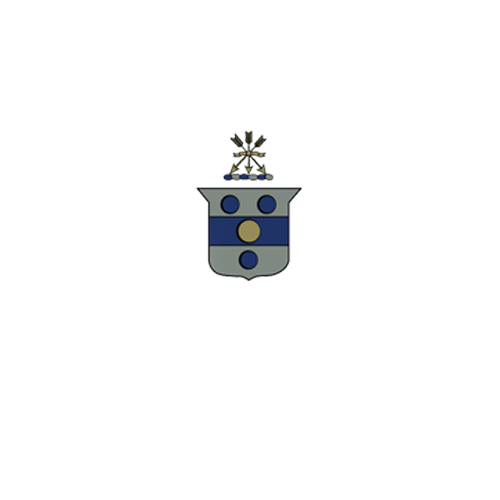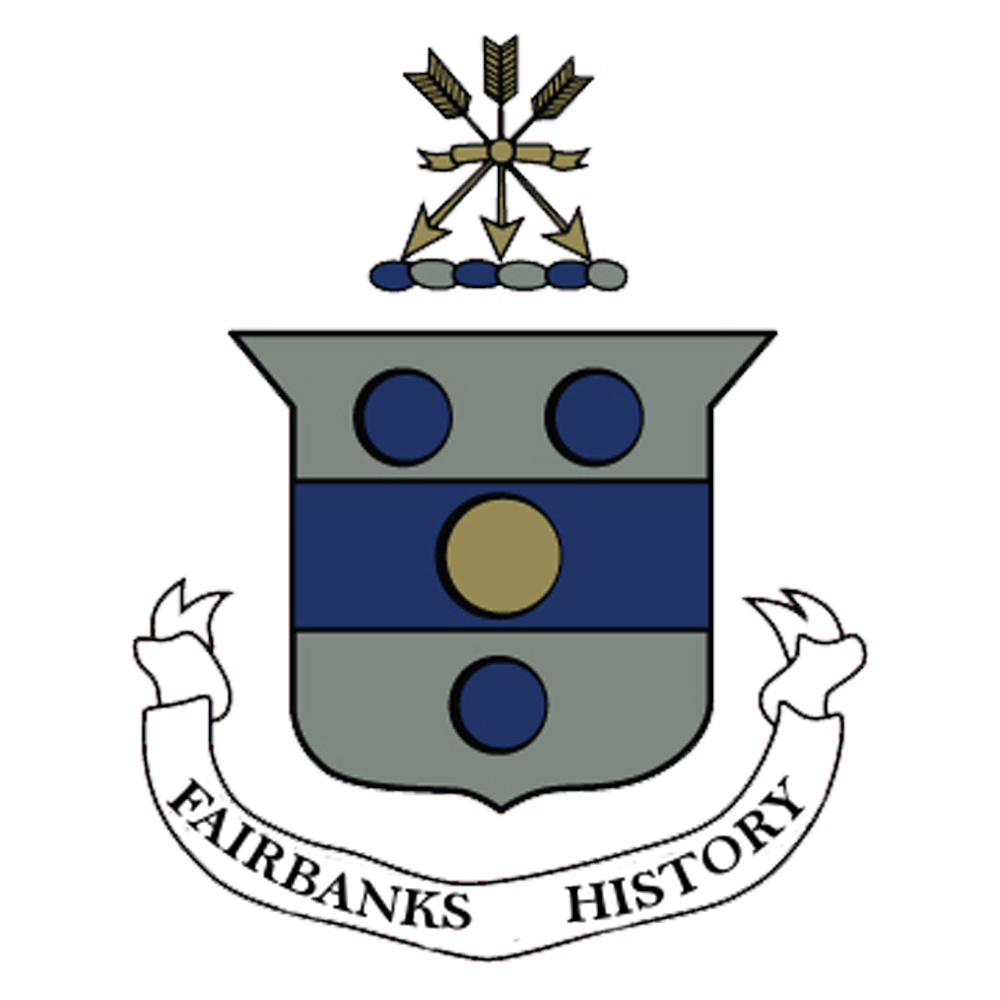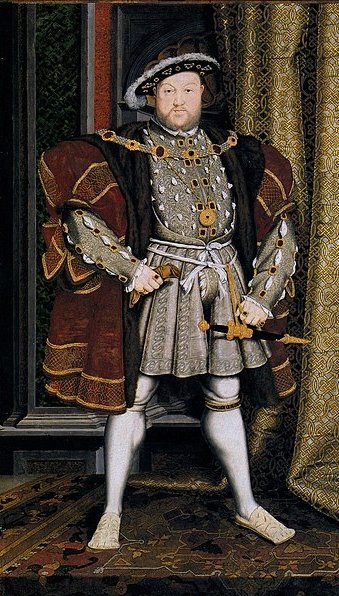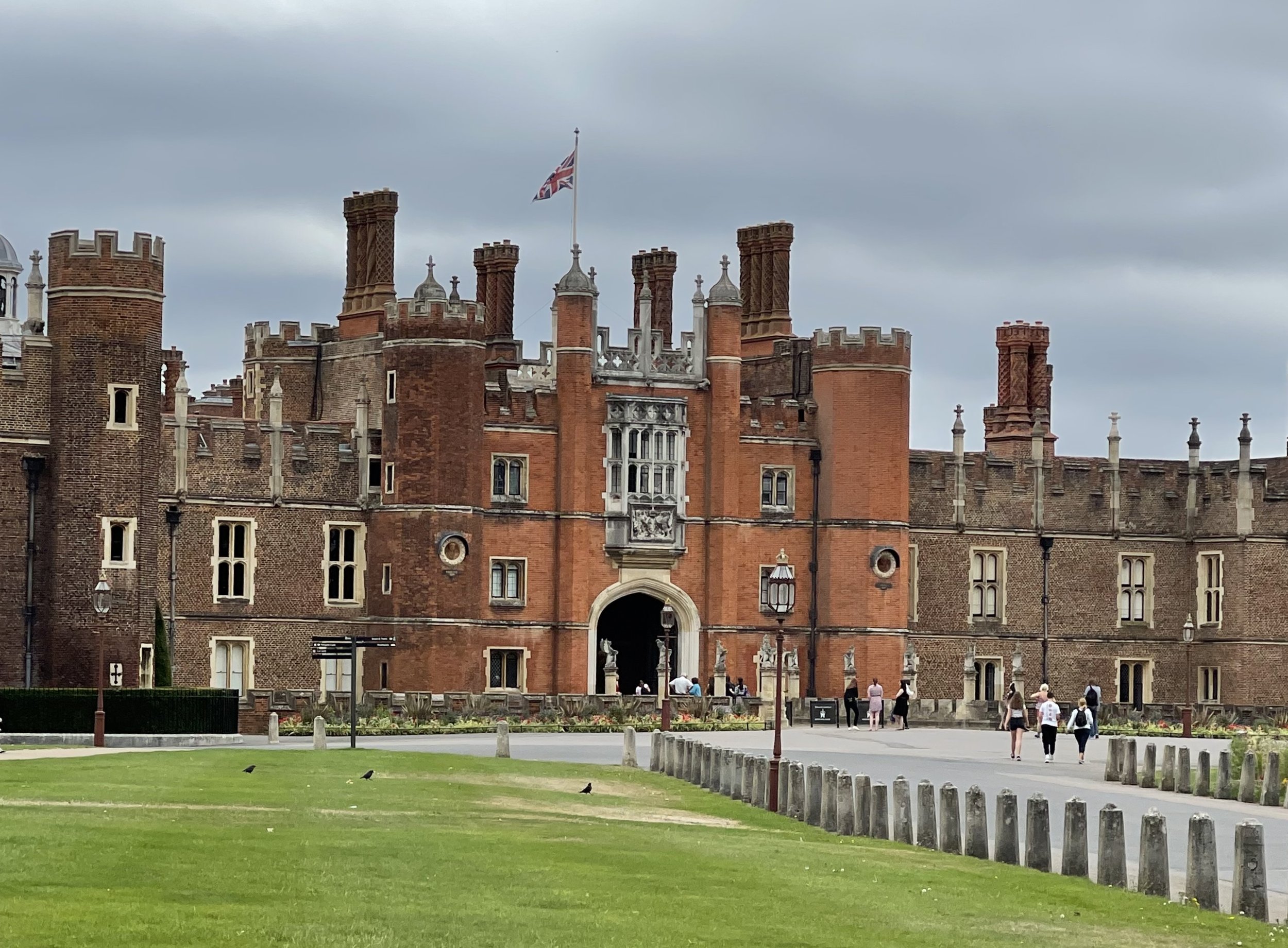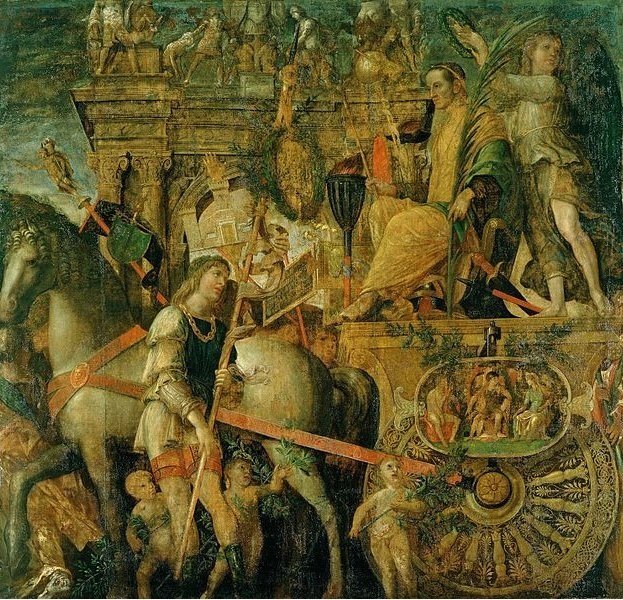The English Kings and Protectorate of Jonathan Fairbanks' Time: Their Accomplishments at Hampton Palace Outside of London
The Kings of England During Johnathan Fairbanks’ Time
A Glimpse of their Lives Through Their Contributions During Their Reign and in Their Residence at Hampton Court Palace
Hazzah!
A visit to the Hampton Court Palace outside of London was a glimpse into the lives of the elite in the 15 and 1600s. Our ancestors, Jonathan Fairbanks and John Prescott were likely in the middling economic population in the 1600s. Their lives would have been much different.
Our ancestors were well aware of the kings and queens’ rulings and their lifestyles. The beliefs of the ruling king or queen would have profound effects on our ancestors’ lives, especially as it related to religion. Often the popular religion, either High Anglican (adhering to more Catholic rituals and beliefs) or Low Anglican (more simplified religion using the Bible to direct the services and beliefs) changed with each monarch. Religious dissonance is believed to be one of the main reasons Jonathan Fairbanks and his family emigrated to the Massachusetts Bay Colony.
The Royals made elaborate processions across England, visiting different summer palaces and dignitaries in all areas. Their show of wealth during the processions and in their many summer palaces denoted power. This blog will explore some of the significant impacts different Kings had on the Fairbanks and Prescott’s lives.
King Henry the VIII
Reign 1509-1649
King Henry VIII reigned before the time of Jonathan Fairbanks, the emigrant. However, this king’s accomplishments and decrees during his monarchy became significant to Jonathan Fairbanks.
Henry VIII is the well-known king of six wives. Some were divorced, some were beheaded, only one lived. Henry used religion to unseat his wives or have them beheaded to ensure I had an heir to the throne.
Prior to Henry VIII’s time, England followed the Catholic religion. Henry VIII asked for an annulment from his first wife, Catherine of Aragon, bases on various accusation, culminating in that she had not produced a male heir to the throne. The Pope would not grant the annulment.
The King touted that he could read the Bible, thus proceeded to make himself the head of the Anglican Church without Catholic supervision. Henry VIII’s denunciation of Catholicism in England coincided with the start of the “Reformation.”
Four of King Henry VIII’s heirs followed him to the throne, one was very short termed. Each successive King or Queen vacillated between the acceptance of the Protestant or Catholic religion. Alternately, the Protestant ministers or the Catholic priests and their strongest supporters were persecuted. Some private homes had a priest hole, an undetectable room, for hiding a clergy from the military that would exact the persecution. The Middle Hague House, believed to be a Fairbanks house near Thornton-in-Craven, had a “priest’s hole.”
King Henry VIII died in 1547, about fifty years before Jonathan married Grace at Halifax, West Yorkshire, England.
King James I
Reign 1603-1625
King James I is know for the continued turmoil of the Reformation in England. The Separatists, now known as Pilgrims, decided to separate from the Anglican Church because of its retained Catholic ways. Any non-conformists was seen as a threat to the Church of England and King James I. The Separatists were forced to flee the country to worship according to their beliefs. They settled in Plimoth Plantation in the New World in 1620.
King James I also persecuted Catholic priests. After the denouncement of the Pope as leader of the church, the King or Queen of England was believed to have “Divine Right,” given by God to lead the Anglican Church and England.
While the Separatists were fleeing, the High Anglicans, the more Catholic sector, planned to blow up the King James I and his Parliament. The Gun Powder Plot was attempted in 1605 by hiding barrels of gun powder to be ignited under the Parliament’s floor.
Guy Fawkes with past military experience was in charge of the explosives. The plot failed. Guy Fawkes had connections in West Yorkshire.
The West Yorkshire area, where our ancestors originated, was considered Low Anglican, leaning toward purification of the church. The Puritans believed the Anglican Church could be purified of Catholic ritual. They didn’t want to separate. The word, Puritan, was a derogatory term in the 1600s, denoting extremists. They too were seen as a threat. Unable to make the changes within the church, they started leaving England in 1628 to form the Massachusetts Bay Colony.
Even before the 1625 Plague of England was declared, King James fled London, the hotbed of the plague. However, he died in March, not from the plague, but perhaps from dysentery at one of the summer palaces.
It should be mentioned here that King James I was a very superstitious man and had a fear of witches and witchcraft. It was during his reign that 10-12 men and women in the area of Thornton-in-Craven were put on trial. These people were from a location near the land of John Fairbanks’ (the father of Jonathan) family and a temporary location of Jonathan Fairbanks (the emigrant) and his family. The witches of this area, just north of Colne, were found guilty of witchcraft and killing at least ten people with their practices. Today, trail markers around that area still depict witches on broomsticks. Local residents tell of old ceremonial grounds of the witches not far from the Fairbanks houses in the area.
King Charles I,
Reign 1625-1649
Immediately after King James I died, his second son, Charles, was called from Scotland to take the English throne. A Spanish bride was arranged for Charles in hopes to improve the relationship between England and Spain. Charles chose, of his own will, a French princess. Henrietta Maria to be his bride. She was a Catholic. Questions arose to his loyalty to the Anglican Church.
King Charles professed to maintain the Anglican Church without influence of the Catholics or his wife. However, Bishop William Laud became an important confidant of King Charles. Laud, a High Anglican, was moved to a position on the Privy Council, a body of advisors to the King. He replace the ailing Archbishop Abbot even though that Archbishop belonged on the council until his death..
When Bishop William Laud became Archbishop of Canterbury, he reinstituted the reading of the Common Book of Prayers, the Book of Sports, and review of the churches for upkeep and beauty, all frowned upon by the Puritan leaning faction. He was also reported as saying the Puritans were a danger to the country. Persecution of Puritans began.
King Charles I’s preference of High Church ritual instead of the simplicity of the Low Church angered the mainly Puritan House of Commons of Parliament. A struggle for power ensued during the early sessions of Parliament. On one account, Parliament refused to fund the King’s many wars. King Charles I dismissed Parliament frequently in the midst of those early sessions. He finally dismissed them permanently, so he could rule without their influence. This eventually led to the English Civil War in 1642.
Jonathan Fairbanks and his family left England for the newly founded Massachusetts Bay Colony during King Charles I’s reign. The King was beheaded for treason 1649 after his capture during the Civil War and a period of internment at Hampton Court and the Tower of London.
Charles I had a specific impact on the life of Jonas Fairbanks, the son of Jonathan and Grace. Charles was born with a deformed leg. His family arranged for a brace to be made to correct the deformity. Not wishing the Royal family to exhibit a weakness, they also commissioned tall boots be made to cover the brace and hide the deformity. The boots were convenient, reaching over the knees for riding and folding down for walking. The royalty and elite began wearing tall “great” boots of fine leather. The great boots became a symbol of high status.
In 1651, a Sumptuary Law was passed in the Massachusetts Bay Colony. It declared that anyone who had not attained a worth of 200 pounds could not wear great boots, silver lace, gold buttons, fine hoods, etc. This law was enacted to show the distinction between the wealthy and those who were not. The law was also to discourage those of meaner worth (lower economic status) from spending their money extravagantly.
While working at Hammersmith Ironworks in 1651 and 1652, the workers, including Jonas, made better wages than other occupations. Jonas hadn’t achieved a 200 pounds worth, even though Jonathan, his father, would have been classified in the upper category. Jonas and many others of Essex County were called to county court for disregarding the Sumptuary Law.
Jonas was acquitted on the premise that he wore the great boots before the broadsheet (public notification) was posted.
Lord Protectorate of the Commonwealth of England, Scotland, and Ireland
Oliver Cromwell, Office 1649-1658
Oliver Cromwell led the Parliament’s army, the New Army, against the army of King Charles I in 1642 in the battles known as England’s Civil War. The New Army won. King Charles I was captured and ultimately beheaded in 1649. Oliver Cromwell became Lord Protectorate of the Commonwealth of England, Scotland, and Ireland.
Oliver Cromwell died in 1658 of disease complications. His son, Richard, ascended to leadership. Several battles were fought between the English and Scottish over who would hold the throne. The Scottish fought for King Charles’ son, Charles II, to take the throne. These fights resulted in the Battles of Dunbar (1650) and Worcester (1651). After which, many Scottish captives were sent to New England as bonded servants. Some of these Scotsmen worked with Jonas Fairbanks at Hammersmith Iron Works, the first successful integrated iron works in the New World.
One Scotsman from the Battle of Dunbar, Mordecai MacLeod, settled in Lancaster, Massachusetts while Jonas was there. Both Jonas and Mordecai were killed at Lancaster during the 1675 King Philip’s War.
During Oliver Cromwell’s office, he initiated the Navigation Acts keeping the colonies from trading freely with other nations. This would become a contentious subject between England and her Colony.
King Charles II, Reign 1660-1685
Charles II by Adriaen Hanneman. Notice the wig. King Charles II made wigs popular.
With restoration of a monarch to the throne, it was agreed that both a King and Parliament should again combine their effort for the good of the Commonwealth.
Though the Navigation Act was passed in 1651 and again in 1660, the colonists continued to trade directly with other countries despite the requirement to ship directly to England.
Massachusetts General Court created a number of laws that did not align with England’s laws, particularly those that were religious based.
In 1652, The Massachusetts Bay Colony illegally minted coins without the King’s image on them. They melted down English coins to remake them into their own coins. This currency was called the Pine Tree coins. King Charles II may have been particularly concerned about the Pine Tree coins, because it did not have his image on it.
The die for the coin was made by Joseph Jenke, a supporter of the settlement of John Prescott’s Nashaway (Lancaster, MA). He was an independent blacksmith at Hammersmith Iron Works and recipient of the first colonial patent. He also developed the first fire truck.
In 1684, King Charles II tried to revoke the charter of the Massachusetts Bay Colony due to these repeated violations.
Hampton Court Palace
Its Importance to Each King of the Jonathan Fairbanks’ Era
King Henry VIII
The building of Hampton Court was begun in 1514 for Cardinal Thomas Wolsey, the chief minister of Henry VIII. Woolsey fell out of favor with King Henry VIII, because he wouldn’t champion the King’s annulment of Christine of Argon , the first of his six wives. After declaring the England Anglican Church separate from the Catholics, King Henry VIII, now self-professed head of the Anglican Church, annulled his first marriage and wed Anne Boylen.
King Henry VIII countermanded Hampton Court for a Royal Palace. He made improvements and additions. Hampton Court Palace was an outward image of the Kings wealth and power. He held lavish feasts and entertainment at the Palace.
King James I
King James I was very afraid of witches. The Pendle witch trials took place in 1612 during his reign.
Some very good things occurred at Hampton Court Palace while Jame I was King. Upon taking the throne, there was a fortnight of festivities. He hosted large events with the first performance of “King’s Men, Hamlet, and Macbeth by William Shakespeare. He hosted the Hampton Court Conference of 1604 to commission the writing of the King James version of the Bible.
King Charles I at Hampton Court
King Charles I was an art lover. He brought many of his collections to the Palace. Among his most known are the nine tapestries of the Triumphs of Caesar by Andrea Mantegna. Tapestries on walls were also used to abate the cold of the stone buildings.
After King Charles I was captured during the Civil War, he was placed under house arrest at the Hampton Court Palace before he was beheaded in 1649 for treason.
Oliver Cromwell
Lord Protector of England
Oliver Cromwell lived much like a king after defeating King Charles I and taking over as head of the country. He moved to Hampton Court Palace and spent much time there, especially for quiet restful weekends.
Cromwell appreciated the art left by King Charles I. He moved the statue of Diana to Bush Park a part of the Hampton Court Grounds.
King Charles II
As a keeper of mistresses, King Charles II gave one mistress, Barbara Villiers, a senior position at Hampton Court Palace so she could remain there. He also took his new wife, Katherine of Braganza, to Hampton on their honeymoon.
In preparation for his new wife’s coming to Hampton, a beautiful Long Water Canal was commissioned.
The King’s Kitchens
Many workers made up the staff to keep the palace and serve the King. This kitchen was for feeding the staff. The King had his own cooks and kitchens. Extravagant meals were served to the King with foods sometimes made into elaborate shapes. Occasionally a whole meal was gilded with gold.
Compare this kitchen with the Shibden House kitchen of the same period.
Hampton Court Palace shows a different side of England in the 1600s. It is interesting to compare it to Shibden Hall in Halifax, the residence of a wealthy West Yorkshire man, and then to the peasants houses of that time. To appreciate the influences that shaped our ancestors’ lives of the 1600s, we must understand the politics, economics, and society of all levels of that time.
Next Up
Superstitions the Fairbanks brought with them from England which would impact their lives in New England.
